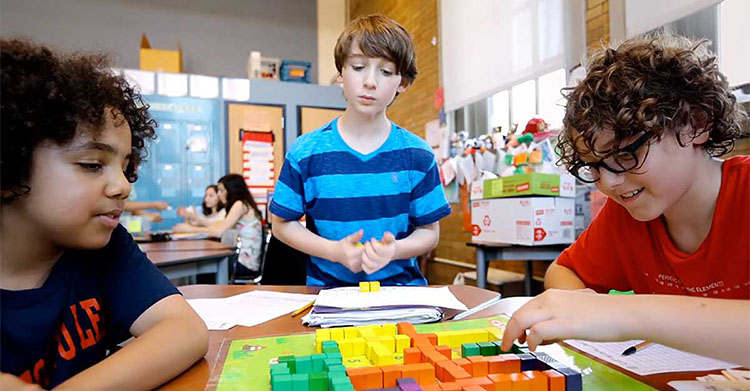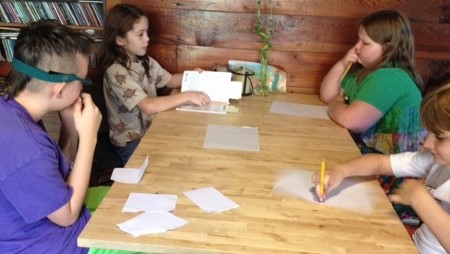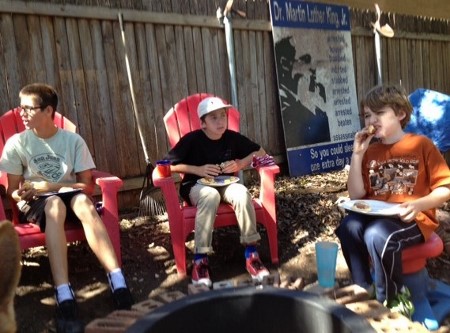The hidden third option: The use of tabletop gaming in social instruction
/Scott Allen, Psy.D., is Director of Psychological Services at College Living Experience (CLE) in Austin, which provides wrap-around supports for young adults with learning differences such as Autism Spectrum Disorder and ADHD. His guest post explains the rationale behind using tabletop role-playing games to teach social skills in CLE Austin’s highly successful programs. An earlier version of this article appeared on the CLE website last year, and we are honored and excited to share it with Alt Ed Austin’s readers.
As a kid of the 80s, video games were a big part of my childhood. I was always interested in having the newest game system and trying out the hottest game. They were a refuge for me after a rough day at school, and a way for me to relieve the frustrations of everyday life. Anyone who has defeated a particularly difficult boss can attest to the senses of accomplishment and pride that accompany this amazing feat. At that point in my life, gaming was a relatively solitary activity that I used to help me cope with the stresses of each day.
There was another side of gaming that I knew about but did not explore in my youth. I had a small group of friends who would talk about playing D&D (Dungeons and Dragons). I thought I would somehow be considered uncool for playing D&D, so I dismissed offers to play the game. As a kid, I was a “closeted geek.” Boy, did I miss out!
Flash forward to my time at CLE. In our Austin center, I have placed great efforts on making our social programming interesting and fun for our students. My approach to teaching is mostly interest-based as I feel that students learn best when they are truly engaged and enjoying their activities. One of my colleagues introduced the idea of tabletop role-playing games (RPGs)—the broader category of games that include D&D and other games requiring participants to take on the roles of characters—as social-teaching tools. I overheard her leading some games in the lounge, witnessed the student engagement, and took note of what great social opportunities these games are.
With my support, my colleague led several tabletop gaming groups. For anyone who hasn’t played, here’s a quick primer. Tabletop gaming has a few general facets:
Players assume the roles of characters who are not themselves (though they may integrate aspects of themselves into their roles). Players stay “in character” during the game and interact with each other as their characters would.
Games are loosely structured, giving players quite a bit of leeway in making decisions in the game.
There is a Game Master, or GM (a Dungeon Master, or DM, in D&D), who leads the adventure. GMs can keep the game very structured, leading the group down a preset adventure, or can be very unstructured, with a more improv-based approach.
There is opportunity for adventuring parties to coordinate and discuss plans for the game. The best games have characters with varying skill sets, allowing the party to take advantage of each character’s strengths.
Despite all the planning the party may perform, there is still an element of chance in the game, usually in the form of a dice roll. When characters use their skills, they roll dice to determine success or failure (called a check in gaming terms).
There are usually elements of exploration, interaction with non-player characters (NPCs), and various forms of battle in tabletop RPGs.
In my experience as a social-skills instructor, it is hard to think of approaches that are more effective in teaching social interaction in a completely nonthreatening way. Our students love this approach, and we have seen evidence of the generalization of skills outside the gaming setting. Tabletop gaming is also a great way to work on executive functioning components, such as planning, prioritizing, flexibility, and emotional control. Below are a few of the many skill areas that can be addressed using tabletop gaming.
Perspective Taking: It’s hard to think of a time in the game when you do not have to take another person’s perspective, as you are acting out a character the entire time. Players also interact with NPCs, often requiring them to understand how to gear communication in order to reach an optimal outcome.
Flexibility: Anything can happen in tabletop games, and parties must adjust quickly to rapidly changing conditions in the game. One important concept in tabletop gaming is called the hidden third option. Often in the game (and in life), we encounter situations when we seemingly have a limited number of choices. In a tabletop game, you might run into a situation where you must fight or avoid a rat, for example. The hidden third option might be to use some cheese to lure the rat to distract a bigger enemy, allowing you to slip by.
Teamwork/Cooperation: The best tabletop adventures require a wide range of characters with different skill sets. When presented with a strength-based challenge, the team needs to have a fighter or a warrior in order to be most effective. However, a mental challenge might require a wizard or a cleric. In addition, parties might encounter puzzles or team-based challenges that require players to work as a group to solve them. When one player struggles, the team must step in to help that player, or the entire party might suffer a grim consequence, like a Beholder wiping the party off the face of the world.
Planning: Although much of the game is done on the fly, skilled parties often plan sequences of actions that depend on the success of prior actions. Sequencing and coordination of actions is very important in battle situations and puzzle solving during the game.
Communication: Non-player characters may respond differently to players’ characters, based not only on what they say but also on how they say it. For example, if a player demands an item in a rude way, the NPC might respond in kind, refusing to give the item, destroying it, or fighting the party. This allows players to have “real” opportunities to work on communication skills without having to deal with the consequences of an embarrassing interaction in real life.
My experiences playing these games at CLE led me to seek out others who enjoy tabletop games in my outside life. I have joined a group of tabletop gamers and have learned to embrace my inner geek in a way that I never had before.
A couple of year ago, unfortunately, my colleague left CLE, and we were in need of new GMs. How did we handle that? First, I gave myself a crash course in how to run a tabletop gaming group. I have been able to run games with premade stories and alter the games based on the needs and goals of the participants. For example, one week I set up a situation where the party needed to utter the magic word help in order to move forward in the game. The reason I added this element to the story was that a student was struggling with asking for help in their everyday life. I am currently running a brand-new group with students playing as superheroes. This will be my first time generating and executing a completely original story.
Second, we have had CLE students volunteer to run tabletop gaming groups with staff assistance. We currently have a student who has made his own tabletop gaming system based on a popular video game. It has been great to see this student lead the game, ask the group for feedback, and integrate the feedback into the game.
Learning how to socialize can be seen as boring or useless for many of our students, but the social skills they learn at CLE are among the most critical in terms of job success and building lifelong relationships. It’s sometimes difficult to talk about areas of life that are challenging, and socialization is often challenging for our student population. The use of interest-based techniques, such as tabletop gaming, helps to take the “edge” off social training, making it fun for both participants and instructors.
Scott Allen




















